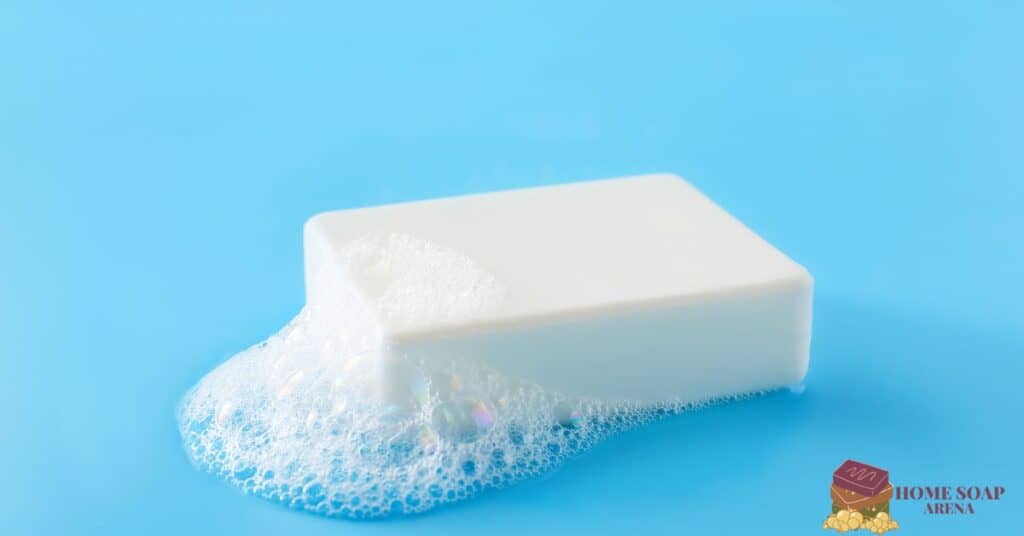Table of Contents
- Does Soap Remove Skin Oils
- What Ingredient In Soap Removes Oil
- Why Do We Need Soap
- Does Oil Dissolve In Soap
- Why Does Soap Push Oil Away
- How Does Soap Help Oil Dissolve In Water
- Does taking a shower with soap eliminate oils
- Final Thought
Do you want to know How soaps remove oil? Based on my years of expertise, I will teach you all you need to know about using soap and water to remove or clean an oil stain for free.
First, you must realize soap can clean well because it acts as an emulsifier. Emulsifiers may combine one liquid with another.
For example, oil cannot be combined with water naturally, but soap may mix oil or filth with water, allowing it to be cleaned from our hands, clothing, or other surfaces.
But that’s not all; as you continue, I’ll explain how this was accomplished and much more.
Now, let’s get started.
Does Soap Remove Skin Oils
Washing your hands with soap creates micelles, which loosen the dirt, grease, oils, and feces-ridden matter particles stuck to your hands.
This helps prevent the spread of illness.
Because the soap envelops the oil molecules, they can no longer attach to your skin tenaciously; instead, they float in the water and are dispersed throughout it.
This allows the water to wash away any grime or bacteria clinging to your skin, clothes, countertops, or bath towels.
What Ingredient In Soap Removes Oil
The following are the constituents in oil-removing soap:
1. Lauric Acid is obtained from entire oils and is commonly used to increase hardness and create a sizeable fluffy lather. However, it lacks glycerin, a substance that helps moisturize the skin.
2. Sodium Isethionate aids in clinging water to debris and oil on your skin, allowing it to be rinsed. It is regarded as a gentle cleanser.
3. Another typical soap component produced from coconut and palm oils is sodium stearate.
It’s the sodium salt of stearic acid and works as an emulsifier. This chemical has a long history of being used safely.
4. Cocamidopropyl Betaine is a synthetic surfactant that aids in removing oils from the skin. Because it is derived from coconut oil, it can be found in several natural personal care products.
More than any other chemical, this chemical is most likely to irritate (i.e., rashes) if used excessively.
5. Coconut oil fatty acids are used to create sodium cocoate. It is one of the most frequent constituents in soap since it cleanses the skin while maintaining a “hard” bar.
6. A common table salt used as a binding agent is sodium chloride.
Why Do We Need Soap
We use soap to make ourselves smell nice and strip the top layer of oil off our skin, which otherwise serves as a breeding ground for germs.
Soap can wipe up oily messes thanks to two of its unique properties: it is amphiphilic, which means that it is both hydrophilic, which means “water-loving,” and hydrophobic, which means “water-fearing.”
Additionally, soap is a surfactant, which means it can reduce water’s surface tension.
Because of their incompatibility, water and oil must be combined with soap before they can be incorporated into a single substance.
This causes the filth that is on our skin to be released.
Does Oil Dissolve In Soap
Because oil and grease are non-polar, which means that they will not dissolve in water, soaps can dissolve grease because of this property.
Soap can combine with both water and oil.
In any case, detergents and the dissolution of various other substances also generate heat.
It’s referred to as the ‘enthalpy change of solution.’ While certain compounds, like sodium chloride, can retain heat during the dissolution process, others, like sodium hydroxide, can release it.
Everything hinges on the relative strength of the ionic bonds that are present inside the solid, as well as the attraction that exists between the ions and the solvent.
When dealing with complex chemicals like detergents, things become more difficult.
A chemical attracted to water and lipids is called a detergent.
Detergents are used in cleaning products. When detergent is added to water, rather than just dissolving like salt, it forms well-defined chemical bonds with the water molecules and begins cleaning.
Why Does Soap Push Oil Away
One may think of soap as a surfactant with two distinct sides.
On one side, oils are drawn to it while water is repelled. Conversely, water is drawn to it while oil is repelled by it.
Germs are drawn to the oil that naturally exists in our palms.
Because oil and water are opposites, water alone will not be sufficient to remove it.
Because the soap contains both oil and water, it can extract the oil that is contaminated with germs from our hands and then wash them away using the water.
How Does Soap Help Oil Dissolve In Water
Because one end of the soap molecule is polar and, as a result, is soluble in water, while the other is non-polar and, as a result, is comparable to oil and grease, soap can clean oil and grease.
The soap molecules envelop the fat while leaving the water-soluble components on the surface, allowing the water to assist in removing the oil.
Therefore, the molecule of soap acts as a connection between two compounds that, on their own, are incompatible with one another.
Does taking a shower with soap eliminate oils
You could be in the habit of taking a shower every day, but if you don’t become particularly dirty or sweaty, you probably don’t need to take a bath more than a few times a week.
Because frequent washing eliminates the good oils and germs from your skin, it can cause your skin to become dry and irritated, and it can also open the door for harmful bacteria to enter via cracks in the skin.
One may think of soap as a surfactant with two distinct sides.
On one side, oils are drawn to it while water is repelled. Conversely, water is drawn to it while oil is repelled by it.
Germs are drawn to the oil that naturally exists in our palms. Because oil and water are opposites, water alone will not be sufficient to remove it.
The components attracted to oil will remain adhered to and pull it into the core.
The soap molecules rearrange themselves to form a barrier, which encircles the oil and keeps it in the middle.
The oily grime is removed along with the soapy water when washed away.
Final Thought
Now that we have established How soap removes oil, it is true that Soap molecules have one end that is soluble in water and the other that is soluble in greasy substances.
As a result, soap acts like a glue, binding oil molecules to water molecules and allowing the water to transport away the oil. Soapy water will remove greasy stains from textiles in this manner.
Furthermore, soap lowers the surface tension of water, allowing it to penetrate small cracks more quickly, making it a more effective cleaning agent.
So, both effects are significant, but the activities of the two distinct ends of the soap molecule remove oil from surfaces.



